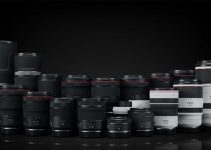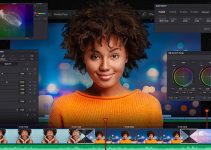Chroma keying is a common post-processing technique that has been utilized in many filmmaking productions and other creative applications for ages. The process allows you to achieve virtually the impossible, whether it be sending your actors to a fictitious distant location or something as simple as letting a weatherman walk in the middle of a map showing an incoming thunderstorm.
While the process itself is straightforward – merely isolating the foreground from the background – people tend to wonder why both a green and blue screen are used in filmmaking. You may even be wondering which one you should use for your next production.
According to Justin Brown from Primal Video, there is, in fact, a critical factor that helps people decide which color to use for their shoot. And frankly, the answer does seem pretty simple – it all depends on the colors of your foreground. Whatever your subject is, whether it be a human or an inanimate object, the colors should not match the background, or else it will simply disappear after the chroma keying process.
For instance, if you know that your actor is going to be wearing blue jeans, it’s probably not a good idea to use a blue screen since their legs would just disappear in post-production. Even minute details such as an actor’s eye color need to be taken into consideration. If your actor’s eyes are too blue, then using a blue screen means that parts of their eyes will become part of the background.
Another aspect that you may want to consider is whether or not you’re shooting outside. If you plan to film outdoors, using a blue screen may be more favorable (as long as you’re not shooting with anything blue as your foreground). Since blue is a darker color, it’s less reflective meaning that if you were to overexpose your shot accidentally, it would be easier to retain the blue areas of the image than trying to recover a more reflective green color.
The green setup, on the other hand, usually produces the least amount of noise after chroma keying in post. Plus, you could achieve decent results without utilizing a complicated lighting setup. Unlike the blue color, however, the green screen setup could produce more spill due to its specific color brightness, which may reflect and bleed over on the on-screen subject in the foreground of your video.
Furthermore, the blue screen will require twice as much light than identical green screen setup. Blue will also result in less color spill, and it’s more suitable for replicating darker or night-time scenes. Regardless of what color screen you opt for, it’s essential to use an uncompressed codec (preferably Raw) to ensure that you’ll be able to retain the highest possible image quality and get the best results once you apply the chroma key filter to your footage in post.
[source: Justin Brown – Primal Video]
Disclaimer: As an Amazon Associate partner and participant in B&H and Adorama Affiliate programmes, we earn a small comission from each purchase made through the affiliate links listed above at no additional cost to you.





In the days of film, blue was used almost universally because of the way the matte film stocks were blue-sensitive. For video, on the other hand, it was determined that green is usually the better option whenever possible because luminance, where most of the edge-detail is found, is generated from a larger percentage of green than either blue or red, and tends to generate a cleaner matte. Modern software tends to be very tolerant nowadays.
Yes. I prefer green most of the time. But I suppose in the Jungle you want the blue screen. Or if you are shooting camouflaged army actors in the studio, or something like that.